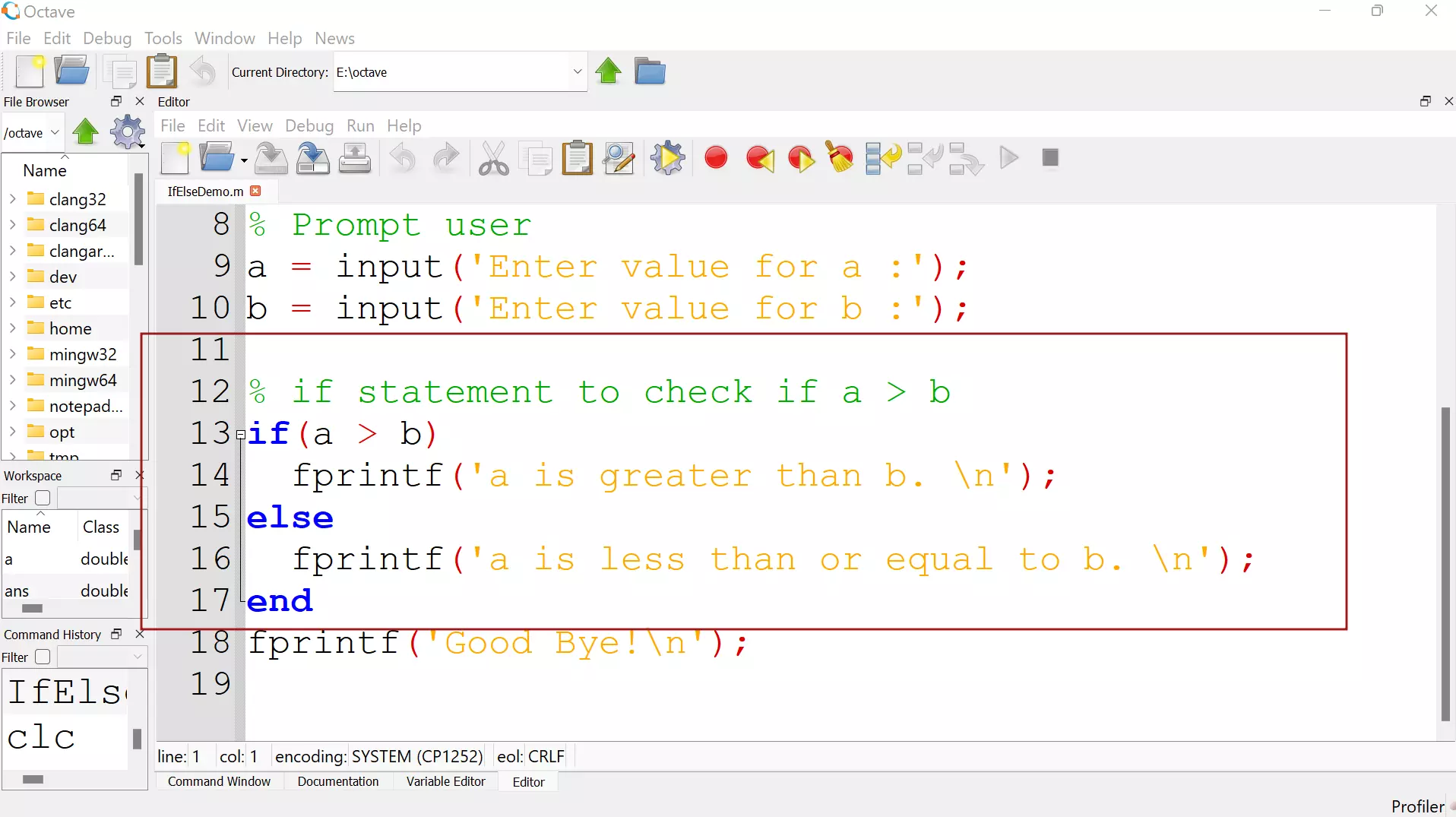
In this tutorial, we will learn about Octave if statement. The if statement is a decision-making statement.
In the simplest form, the if statement syntax looks like this:
The if-condition is an expression that controls the flow of the if block. The if-body is executed only if the condition is true. The condition expression in an if statement is true if its value is non-zero, and false if its value is zero.
We can also have the else body for the if statement.
If condition expression evaluates to true, if-body is executed; otherwise, the else-body is executed.
fprintf(‘Welcome.\n’);
% Prompt user
a = input(‘Enter value for a :’);
b = input(‘Enter value for b :’);
% if statement to check if a > b
if(a > b)
fprintf(‘a is greater than b. \n’);
else
fprintf(‘a is less than or equal to b. \n’);
end
fprintf(‘Good Bye!\n’);

Output
Welcome.
Enter value for a :9
Enter value for b :16
a is less than or equal to b.
Good Bye!
>>
We can also have multiple decisions combined in a single if statement

% Sample Octave Script % If Statement Demo % Octave Tutorials - www.TestingDocs.com marks = input('Enter marks:'); % if-else ladder statement if( marks >= 90 && marks = 80 && marks < 90) fprintf('Grade: A - Good \n'); elseif( marks >= 70 && marks < 80) fprintf('Grade: B+ - Above Average \n'); elseif( marks >= 60 && marks < 70) fprintf('Grade: B Average \n'); elseif( marks >= 50 && marks < 60) fprintf('Grade: C+ Need Improvement \n'); elseif( marks >= 40 && marks < 50) fprintf('Grade: C Poor \n'); else fprintf('Fail: No Grade :-( \n'); end